Table of Contents
Plastic has been a mainstay in the food industry for decades, and concerns about its environmental harm have reached global levels. As we learn more about the importance of sustainability and the various initiatives taken to reduce our dependence on plastic, we must consider the many alternative options and innovations becoming increasingly available as technology advances.
One such alternative worth considering is edible packaging, which has recently gained traction in recent years due to the clear paradigm shift toward eco-friendliness. Governments, businesses and packaging experts are already beginning to invest more money into this alternative, resulting in a quickly expanding market ready to be tapped. In fact, according to Allied Market Research, the global consumable packaging market was valued at $697 million in 2016 and is on track to reach $1.10 billion in 2023.
So as suppliers continue to cultivate more resources for consumable solutions, this new packaging movement will only continue to gain steam.
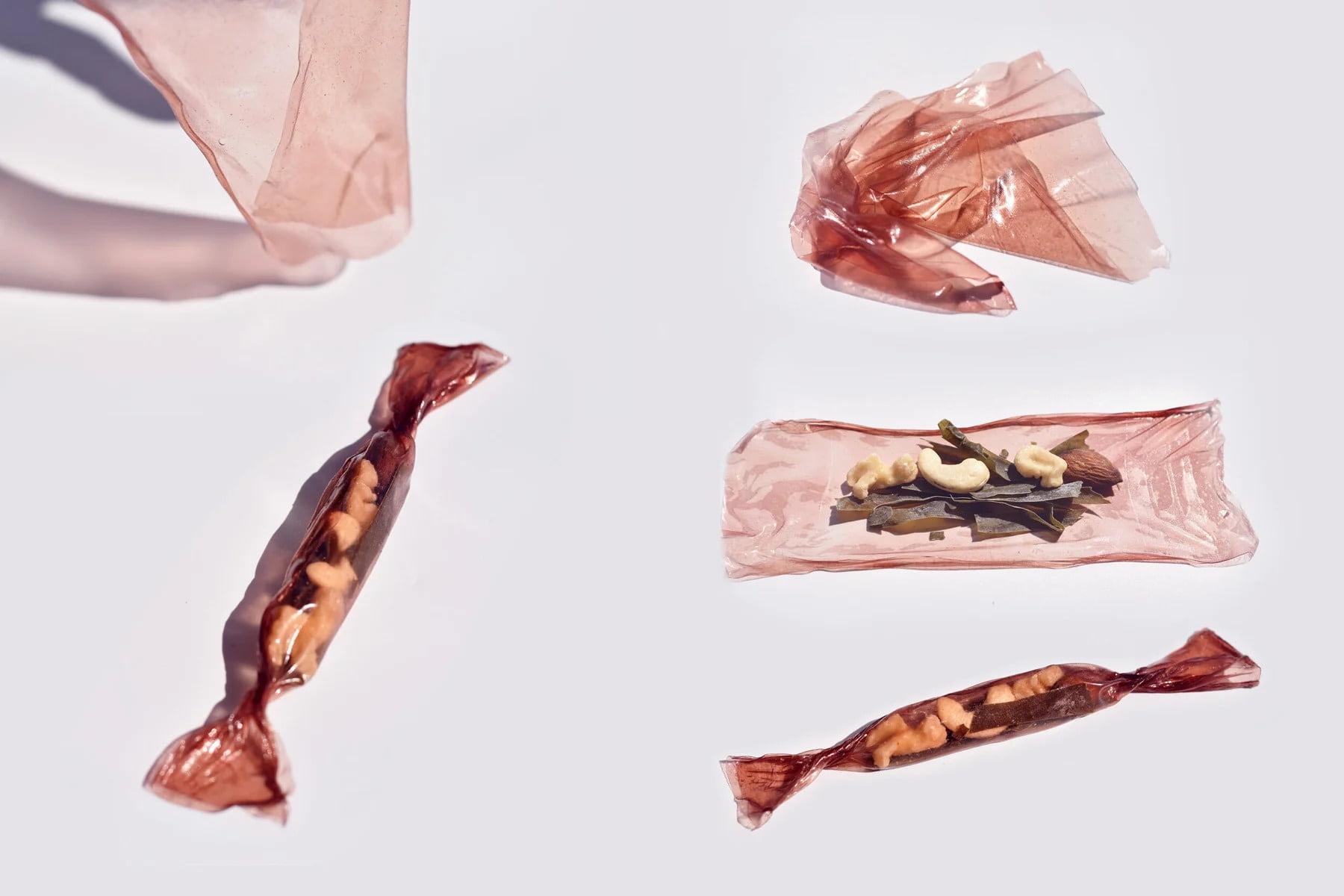
Source: Wen Wen Fan
Now is the perfect time to delve into this market, and we’ll provide you with everything you need to know to get started. We will explore the different types of edible packaging currently available and some of their advantages and disadvantages to help you decide if this option is right for you! But before we get into the finer details of this fantastic alternative, we must first cover the basics.
What is Edible Packaging?
As the name suggests, it is a type of sustainable food packaging designed to be eaten or biodegraded as efficiently as the food it protects. Commonly made from natural, plant-based materials such as seaweed or casein, any type of film, sheet, layer or coating qualifies as edible packaging so long as it can be eaten alongside the food product.
And with the package being consumed instead of disposed of, this sustainable packaging method is perfect for helping reduce our dependency on plastics while naturally generating less waste as everything is eaten, leaving nothing behind.
This alternative comes at a crucial point in time for the food industry as it has recently come under fire for the sheer amount of waste produced. Most traditional food packaging comes from materials that are not biodegradable or natural, and statistics from the United States Environmental Protection Agency show that food and plastic accounted for over 30% of solid waste in 2018.
Thankfully consumable food packaging is available in various types, bio-materials and plant-by products, making it a solid choice to swap traditional packaging for an eco-friendlier option. So now that you know what edible packaging is and its role in reducing waste in the food industry, you may wonder what types are available.
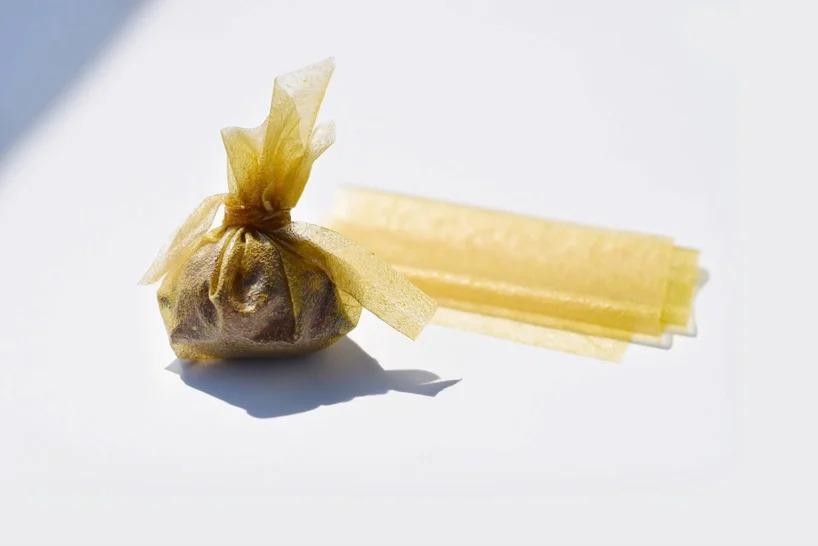
Source: Wen Wen Fan
Edible Packaging Options
Although consumable packages are a newer addition to the many sustainable options, you’ve probably encountered them before and will definitely see more variations soon! Ice cream waffle cones, for example, are edible packaging. And as more innovations reach the market, more options are on the horizon.
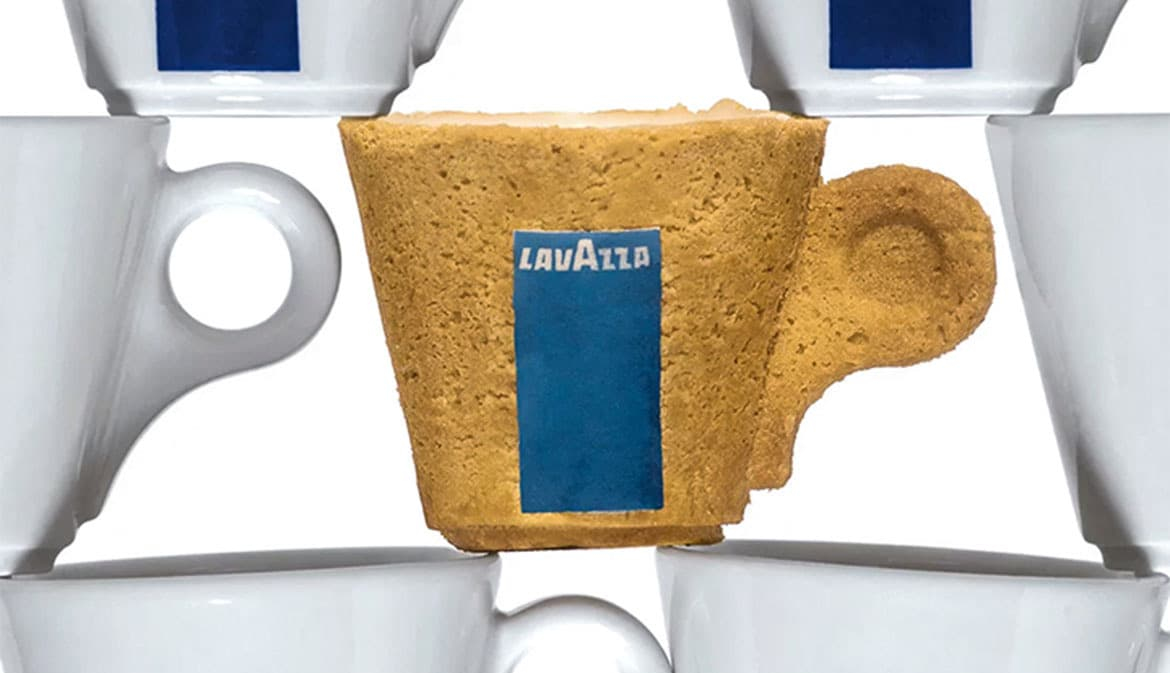
Source: Sardi Strategic Design
Hard cookie coffee cups, sweet gelatin packaging, fruit-like casings, and candy wrappers made of potato fibers or rice paper are just some examples of companies experimenting with new ways to make consumable packaging.
Some other popular innovations include;
Straws: Consumable straws, such as the ones showcased here, are a trendy innovation to reduce dependence on regular drinking straws. Tasteless pasta made of wheat and water, fruity apples made from leftover apple fibers, or sweet sugar straws are available for whatever beverage you wish to drink, whether it’s something fizzy, fruity or alcoholic.
When used, these straws last for nearly an hour and can serve as a sweet snack along with your beverage. Or, if you would like a less intrusive experience, pasta straws provide no taste and are even suitable for hot drinks! Regardless of your choice, all straws can be eaten or are 100% biodegradable.
Food film: A more recent development. Researchers from the University of Nottingham developed edible and 100% biodegradable food film using plant-based carbohydrates such as konjac flour, starch, cellulose and proteins. This innovative food packaging film offers better storage, safety and shelf life while being much more environmentally friendly than plastic.
Eco-bags: Indonesian company, Avani, developed a consumable, biodegradable eco-bag from cassava root that can dissolve in warm water, but the intention of this bag wasn’t to be consumed by humans. Avani’s eco bag nourishes fish and insects when consumed instead of poisoning them with plastics!
Spoons: Bakeys have created the world’s first consumable cutlery line from rice flour, wheat, and sorghum to combat plastic cutlery pollution. Designed to be fully vegan with no trans fat or preservatives, this company aims to create an eco-friendly eating utensil suitable for mass audiences. With over 40 billion plastic utensils used yearly in the United States alone, cutlery plays a massive role in the environmental harm caused by the food industry, and Bakeys aims to lessen that impact.
Bottles: Ooho, the edible bottle, is the leading consumable alternative to plastic bottles. Developed by Skipping Rocks Lab, Ooho uses a technique popularized in cooking spherification. By utilizing a double membrane of sodium alginate and calcium chloride, Skipping Rock Labs developed a transparent gel wall solid enough to hold liquid in a spherical pouch-like container. Unlike a traditional plastic water bottle, this container is completely consumable and leaves no waste behind.
How is Edible Packaging Made?
As shown in the above section, consumable packaging comes in many forms. This type of sustainable packaging is relatively new, so innovation and experimentation are a constant, and there is no one method to make edible packaging. However, there are several guidelines packaging innovators must follow to ensure their invention is the least intrusive to consumer experience and is indeed environmentally friendlier than traditional means.
The ultimate goal for packaging is, first and foremost, to protect and preserve the product. Since many common resources used in edible packaging consist of some shortcomings, the packaging is usually made with several different components to balance and support each other’s weaknesses.
Secondly, to be eaten or biodegraded without harmful environmental impact, you do not want to include synthetic, toxic materials such as plastics; that would be counter-intuitive! Natural materials such as wheat, seaweed, alginate, fruit, or plant fibers should be considered in combinations that complement each other.
After selecting the appropriate materials, films and coatings are created by emulsifying or dispersing film-forming polymers into a solvent such as water or ethanol. It is then applied directly to the food item with the assistance of the solvent.
To learn more about sustainable coatings, read here
Finally, though a good amount of consumable packaging on the market may include complimenting tastes, the packaging should have a neutral or tasteless flavor in most cases. The reason for this is that if the taste is too strong, there’s a risk that the item inside will absorb the flavor and compromise the product. To avoid this, always consider tasteless or subtle, complimenting flavors to accompany your product.
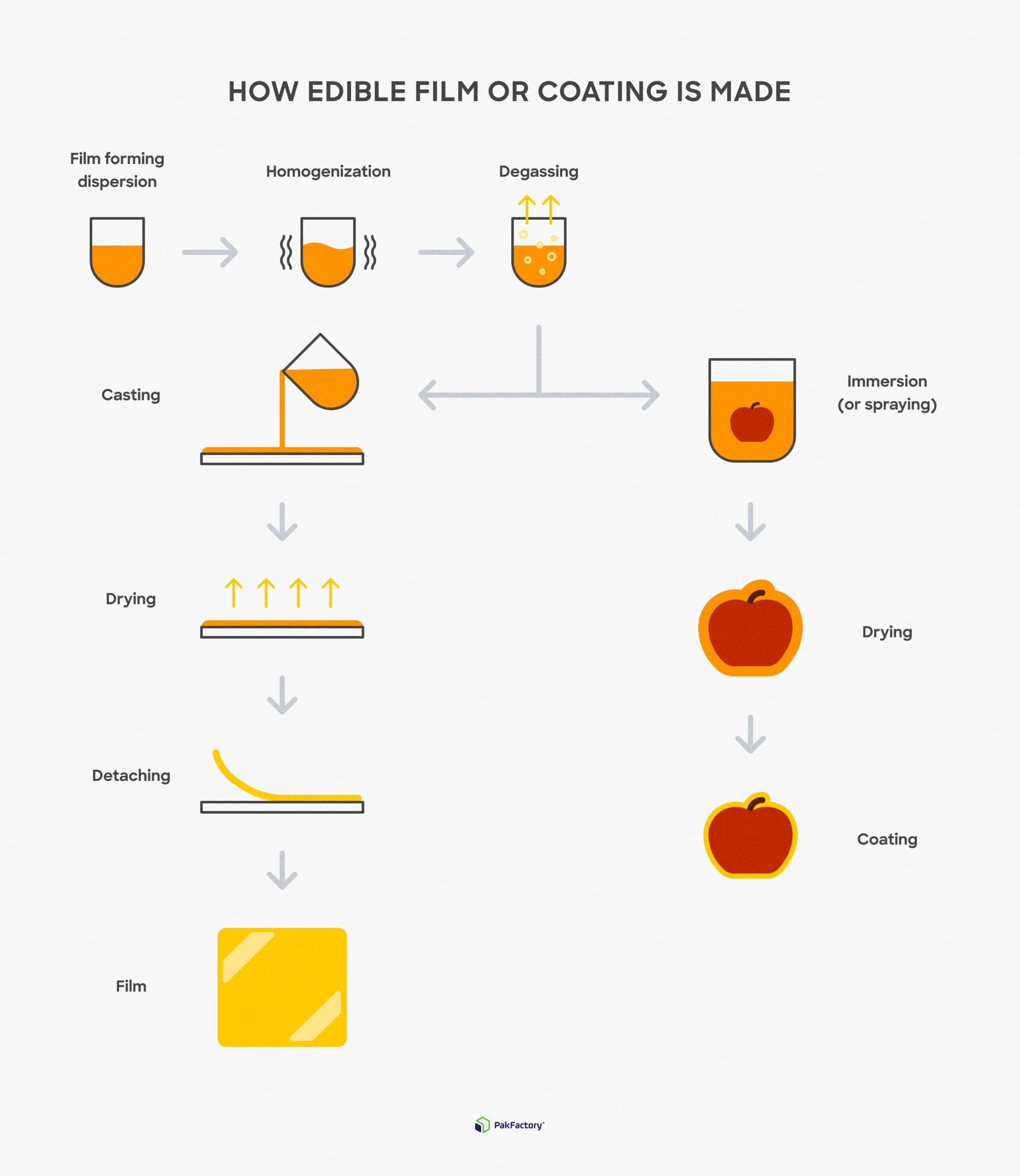
Why you should consider Edible Packaging for Your Business
But now that we better understand this new type of sustainable packaging and covered the extensive innovation going into its development, you might wonder what the benefits of joining the edible packaging market are. Like other sustainable packaging options, the benefits are the same and more!
Meet customer expectations
The first benefit is the most significant business concern: satisfying customer expectations around sustainability. We’ve seen a global shift towards eco-friendliness, and customers are increasingly scrutinizing brands to ensure sustainability is a core practice.
Edible packaging is one of the best ways to accomplish this.
Because there is inherently zero waste tied to this type of packaging, and it is natural and biodegradable, it can be a great way to show that your company is willing to commit to the environment in the long run and will help build a loyal customer base that your business can rely on.
Diverse purposes
With plenty of innovations in developing new ways to use consumable packaging, many options are available to make this packaging your own and stand out from the rest. This type of sustainable packaging is multi-purpose and can be used in various ways for sustainability, versatility and cost-saving.
Some examples of this diversity include single-use items like the ice cream waffle cone mentioned earlier in this article or packaging for refrigerated items. This usage range is even expanding further with the advancement of technology into the territories of hot liquid containers and food preservation!
Doing Your Part for the Planet
Lastly, edible packaging is a great way to protect our planet. Even among the other sustainable options, this is one of the best. By eliminating the typical waste cycle and circumventing recycling methods, no traces are left behind to end up in landfills or improperly disposed of. Even when consumer behaviors cause improper disposal or littering, 100% biodegradability still ensures a safe and happy planet.
Drawbacks of Edible Food Packaging
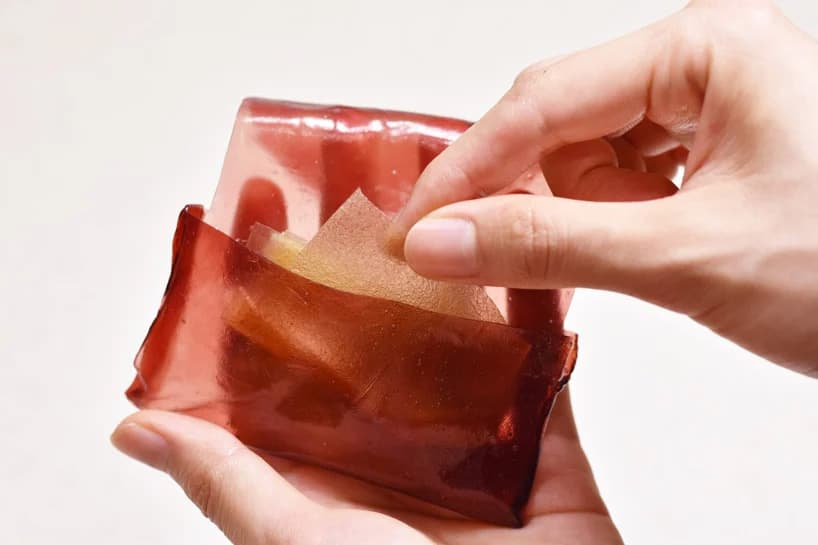
Source: Wen Wen Fan
But just like with any other sustainable packaging, there are still disadvantages. This packaging method still needs to be perfected and, at the current time, may still need non-consumable materials, negating some environmental benefits.
Furthermore, because edible packaging can be more sensitive to temperature and heat, more care is required during shipping, which may be costly for some businesses to maintain.
And while plenty of research has shown its safety and effectiveness, there may be difficulty in gaining customer trust for edible food packages. People are so used to throwing away packaging or seeing it as a disposable item that it will take time for the culture to shift towards consumable packaging. But the good news is that it isn’t impossible.
The Future of Edible Packaging
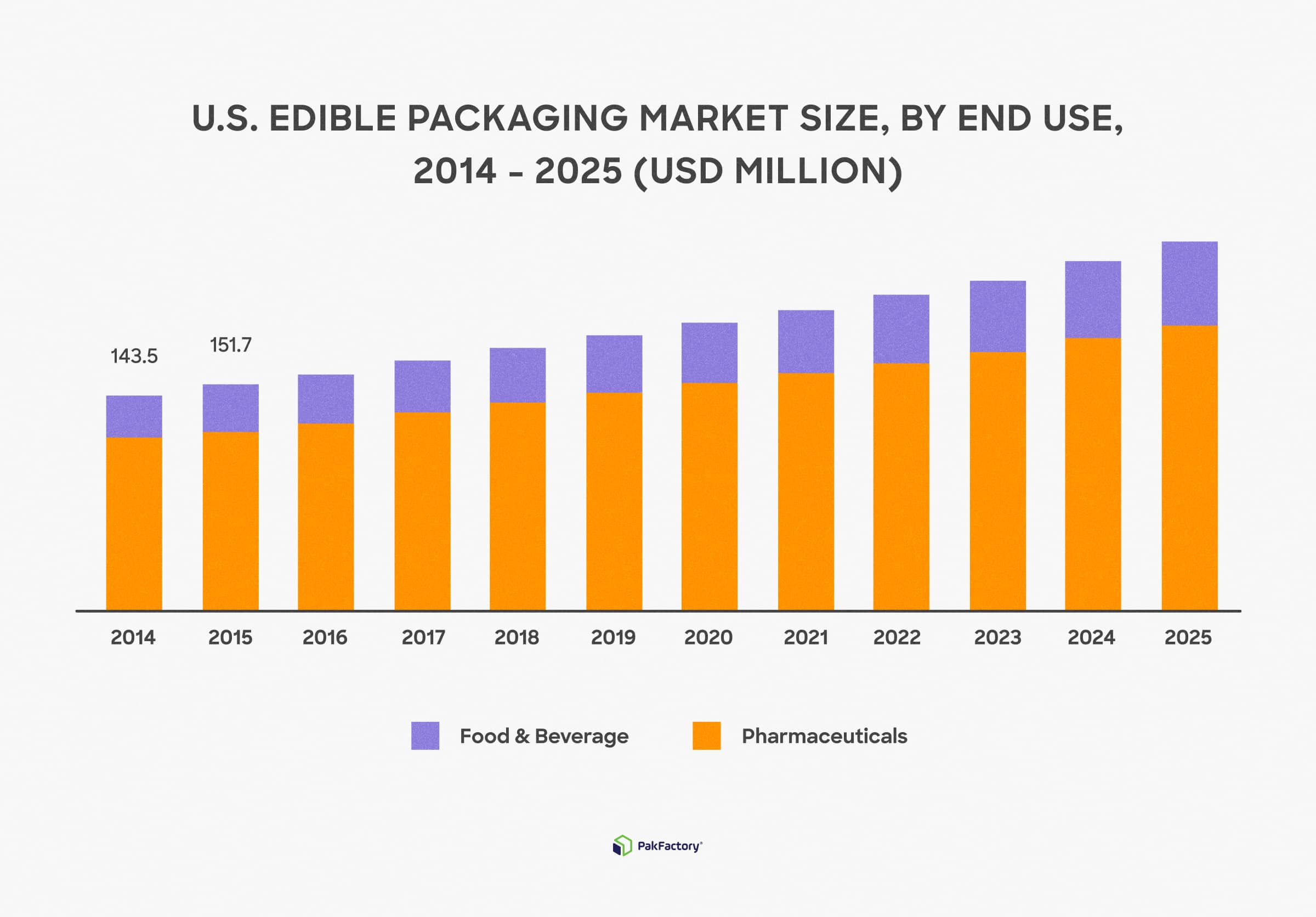
One thing that has become apparent is that the future of packaging is starting to change. We’re moving towards more environmentally-friendly options that can significantly help reduce waste, such as plastic packaging and other toxic materials while creating a new standard of sustainable initiatives.
Although more research and development are needed to scale this new sustainable packaging option and make it suitable for large-scale use, the current results show a lot of progress. So as more policies change and resources are invested into sustainable, edible packaging, we’re poised to see more innovation for more than just the food industry.
Expect to see changes in various industries, not only for edible packaging but sustainable packaging as a whole.
If you want to read more about sustainable packaging, please visit us here!





